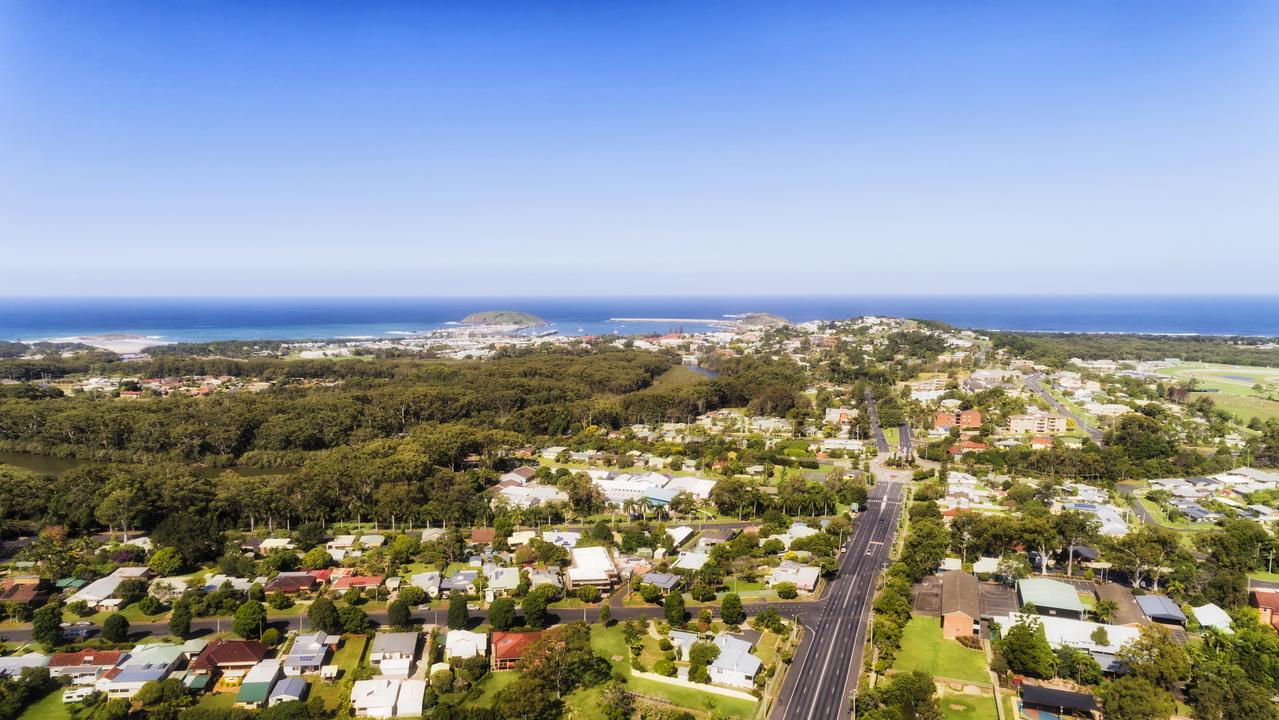Brett and Lisa Vercoe unveil bold vision for Orara Valley rewilding
It was once the “land of the giants” and a Coffs Coast couple are dedicating themselves to bringing it back, but it will take about a century.

Coffs Harbour
Don't miss out on the headlines from Coffs Harbour. Followed categories will be added to My News.
Brett and Lisa Vercoe won’t ever lay eyes on a piece of the Orara Valley resembling its pre-colonial wildlands.
But they are determined that one day someone will.
The couple have embarked on an ambitious project to rewild Narlu, their property on the banks of the pristine Orara River.
The massive red cedar and white beech trees that once inhabited the region are long gone, felled by the timber-getters of the late 1800s.
It’s a story Mr Vercoe tells with a hint of sadness.
“There is nowhere you can go in Australia today – except for some extremely remote locations – where you can (see) something that looks like a snapshot of what Australia looked like 200 years ago, before Europeans got into it with the axe,” he said.
“(The Orara Valley) is very lush with rich soil and the right topography to grow huge trees.
“It’s the land of the giants, botanically.”
Already they have planted more than 1500 seedlings in the hope that one day the area can be brought back to its former glory.
The Plan

This is no ordinary revegetation project.
The family bought the property with the intention of re-establishing lowland subtropical rainforest, an endangered ecological community.
They will also connect two large sections of primary koala habitat separated by more than 200 metres of open space, which Mr Vercoe says may as well be 200km on account of the risk the animal faces from predation.
Already they have established a thriving nursery with countless seedlings propagated from seeds taken from within the valley itself.
It’s an approach that will give the plants, and their project, the best chance of success.
“The idea – and I won't see it – is that people will actually have somewhere to go to see what Australia looked like a couple of hundred years ago before the white man upset the balance,” Mr Vercoe said.
“It’s a really big task but we have really been encouraged by how quickly things have started to progress.”
Early results

Within six months of starting the project the couple began to see big changes.
Along with clearing weeds and huge replanting effort, fencing the property to prevent the agisted cattle from accessing the river had a profound impact on the landscape.
Without cows eating and trampling the undergrowth, the area along the picturesque river started to transform.
“The recovery in the seedbank is just mind-blowing, it has obviously been sitting there all that time waiting for an opportunity,” he said.
“All these new trees just popping out of the ground, we could never have planted that many.”
Fridays Creek and the Orara River meet at Narlu and is a prime example of the impact cattle can have on the waterways, according to Mr Vercoe.
Allowing cattle into waterways can worsen erosion and push sediment into creeks while polluting creeks with faeces.
He describes the two rivers as “chalk and cheese” with the crystal clear Orara turning a shade of brown once it meets Fridays.
The scale
Coffs Harbour City Council has been assisting the Vercoes through the Orara River rehabilitation project, an opportunity offered to many landholders in the area.
Biodiversity project officer Samantha Hessey said most projects involved picking out a section of property and working on weed control, revegetation and erosion control.
However, the Narlu project was on a scale much larger than anything done in the area previously.
“They have pretty much started their own nursery, learnt their species, collected seed from all the trees, propagated those plants themselves and done an incredible amount of research,” Ms Hessey said.
“We have done about 25 per cent of the work and Brett and Lisa have done the other 75 per cent, so it is a bit more than the average landholder does.
“They are exceptional.”
Changes in the Valley

Across Australia changing demographics in regional and rural areas means land once used exclusively for agriculture is becoming diversified.
The Orara Valley is no different with hobby farmers and tourism enterprises already well established.
Ms Hessey said there has been an increase in awareness of the importance of vegetation on rural properties that wasn’t seen when the Orara River rehabilitation project began 20 years ago.
A lot of new landowners have been included in the project aimed at improving the riparian zones along the river, a river that feeds into the region’s water supply.
“(There is) definitely a change in approach,” she said.
“Generally speaking, a lot of the older farmers now have a greater awareness of healthy waterways and good vegetation on their properties.”
Technological approach

Principal ecologist at Kaluta, Nathan Litjens, is a friend of the Vercoes and is similarly passionate about the project.
Mr Litjens is using drone technology to map the property as close to “year zero” as possible in an effort to track the project’s progress.
The technology is so advanced that vegetation health can be monitored from the air by using thermal imaging to assess heat reflected off of the plants.
It also helps track the growth of the canopy over time.
This is an integral part of revegetating rainforest plants which require cooler environs.
He said the goals of the couple were “very noble”.
“I have heard it said the meaning of life can be summarised by the person that plants a tree knowing they will never live long enough to see its shade,” he said.
“That’s exactly what Brett and Lisa are doing.”




